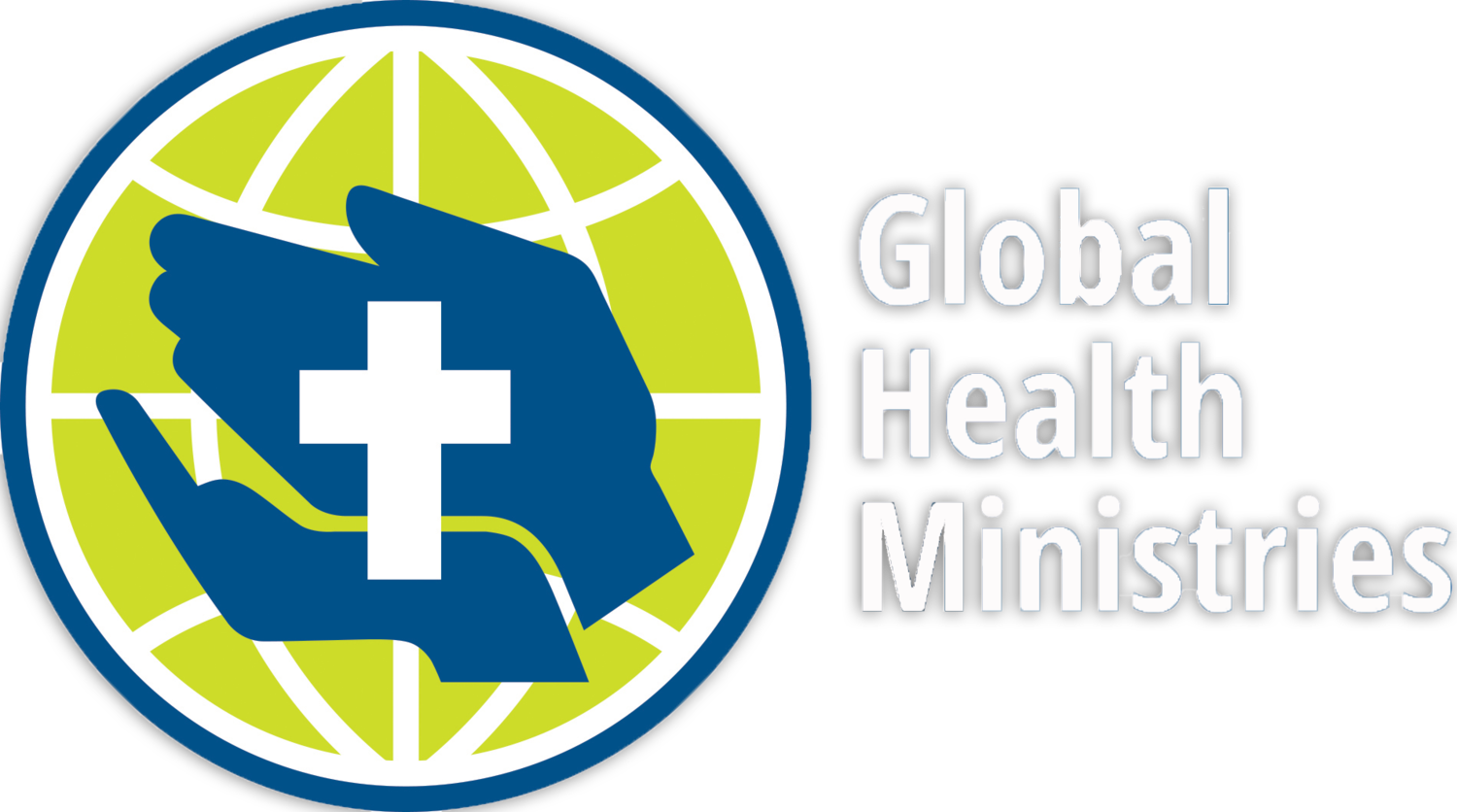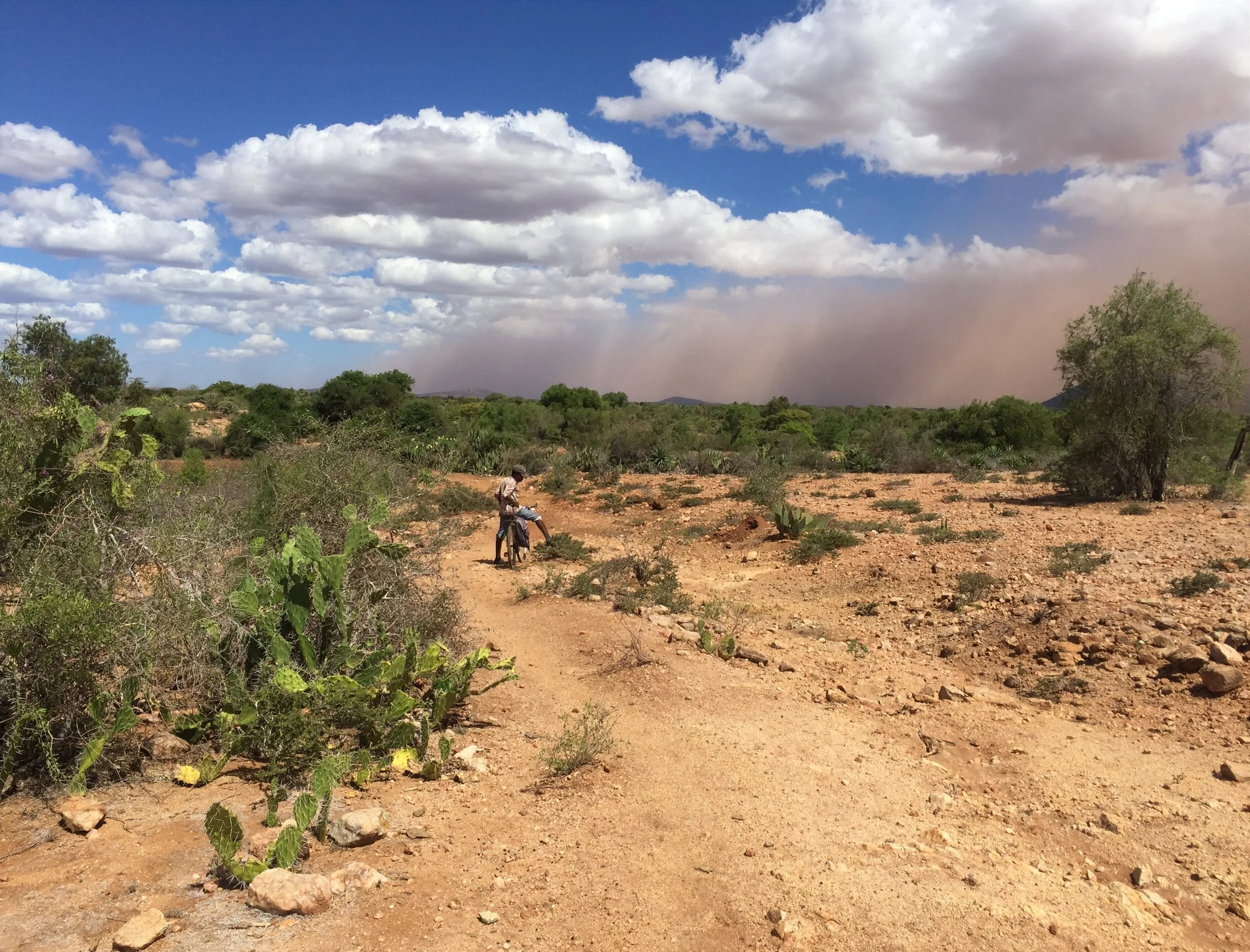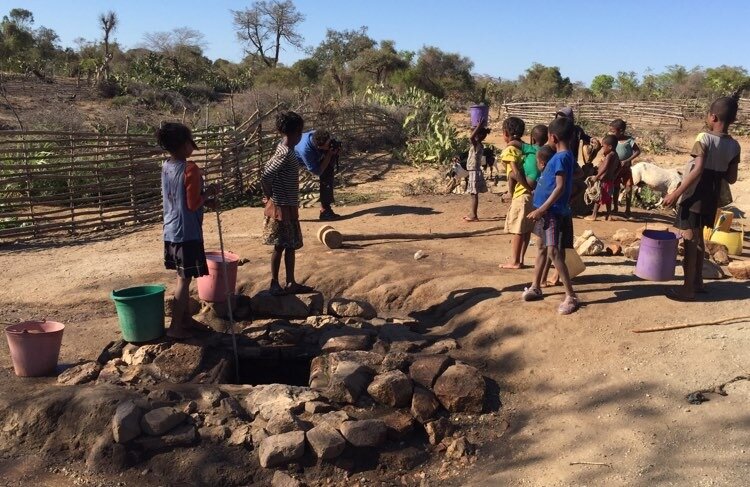World Water Day!
In the latest in a series of emails to partners sharing information during the COVID-19 pandemic, Rob Thames, GHM’s Director of Global Health Administration Partners (GHAP), noted that over 70% of the Earth is covered with water. Despite this, 1 out of 3 people lack safe drinking water, and 3 out of 5 lack safe sanitation (WHO).
On March 22 we recognize World Water Day, a core focus of which is the United Nation’s Sustainable Development Goal #6: water and sanitation for all by 2030. The goal will be hard to achieve in southern Madagascar.
The Situation
Water has always been precious in southern Madagascar. There has always been a dry season, and drought has often afflicted the region. But climate change has made drought more frequent and more persistent, and finding and managing water sources has become increasingly urgent. The four wettest months of the year in southern Madagascar are typically December through March, and they usually bring more than 70% of the year’s total rainfall. By December, 2020, southern Madagascar was already unusually dry, crops had failed and the life-giving, restorative rains that communities count on didn’t come. Sandstorms, driven by trade winds that come every year, have become more frequent and more intense, further drying out fields, hindering planting, and contributing to a cycle that perpetuates poverty and is impacting health. As food insecurity and malnutrition rates, already among the highest in the world, increased, significant internal displacement occurred as people left, hoping it will be better somewhere else. They say in Anjeba, a village in Jafaro Commune, that “those who didn’t grow vegetables already migrated.” But to grow vegetables, you need water.
Traditional hand-dug well at Sovatry, before repairs
Global Health Ministries’ Role
GHM has been partnering with communities in southern Madagascar, particularly in the hard-hit Amboasary district in the Androy region, to help improve access to water, helping locate water where there is no well, and sharing resources to make existing wells more safe.
Where a well is needed and sites identified, community members hire a local person to manually dig the well, often young men who have had experience with sapphire mining. First, the community agrees on such things as rules of use, and how to maintain the well. The community covers the cost to dig, which is about $27, the same as the cost this winter of a zebu, the one-humped cattle that is ubiquitous in southern Madagascar and an important part of the culture and the economy. The cost to hire a well digger is a sacrifice on the part of the community but they know a functioning well can provide the entire village with water for their families, their cattle and goats and their small plots of cassava, corn, peanuts and beans for years to come. GHM contributes resources to help make sure the well is safe.
Improved well, with cement collar and cover, ready for pulley system
Traditional hand-dug wells in many villages are open, their walls sometimes crumbling in the sandy soil. The risk of injury for small children and animals falling in is real as is the risk of contamination. GHM helps provide cement collars and a wooden cover to improve safety for new and existing wells, and adds a pulley system to replace the traditional rope and bucket.
Most of these hand-dug wells are 5 to 20 meters deep. Some communities have experienced water levels that are lower than usual over the last dry months and many of the wells will draw down as they are heavily used during the day, but water levels go back up after several hours. Most communities have a rule of use that opens the well at 4:00 am and closes it at 6:00 pm. Outside of at least one village, bonfires dot the landscape through the night as people wait in line for the well to open and their turn to draw water.
A functioning well and access to water opens the door for new agricultural practices that can help families grow more food, improving nutrition and health. GHM is partnering with some communities to talk about planting methods and new seed varieties that offer the potential for higher yield, for example, and to install a drip irrigation system, including a reservoir, tubing and other materials as well as training. It’s enough to irrigate a plot of land a little smaller than an American football field, where they can grow enough food to take some to market and help feed the village.
Hundreds of families in the 29 communities that have already received new or improved wells in partnership with GHM are able to access water today. Some rain has begun to fall in southern Madagascar in the last couple of weeks. We can’t know how long the rains will last, and more wells are certainly needed but, something to celebrate on World Water Day!



